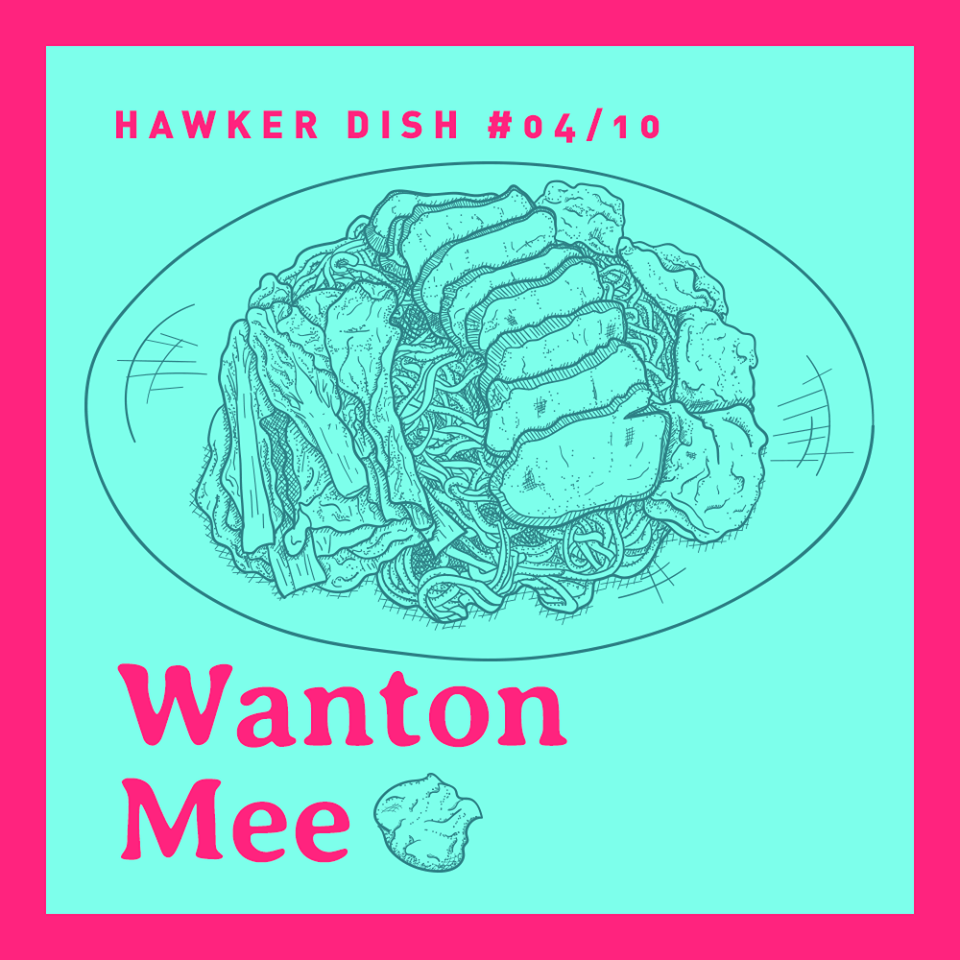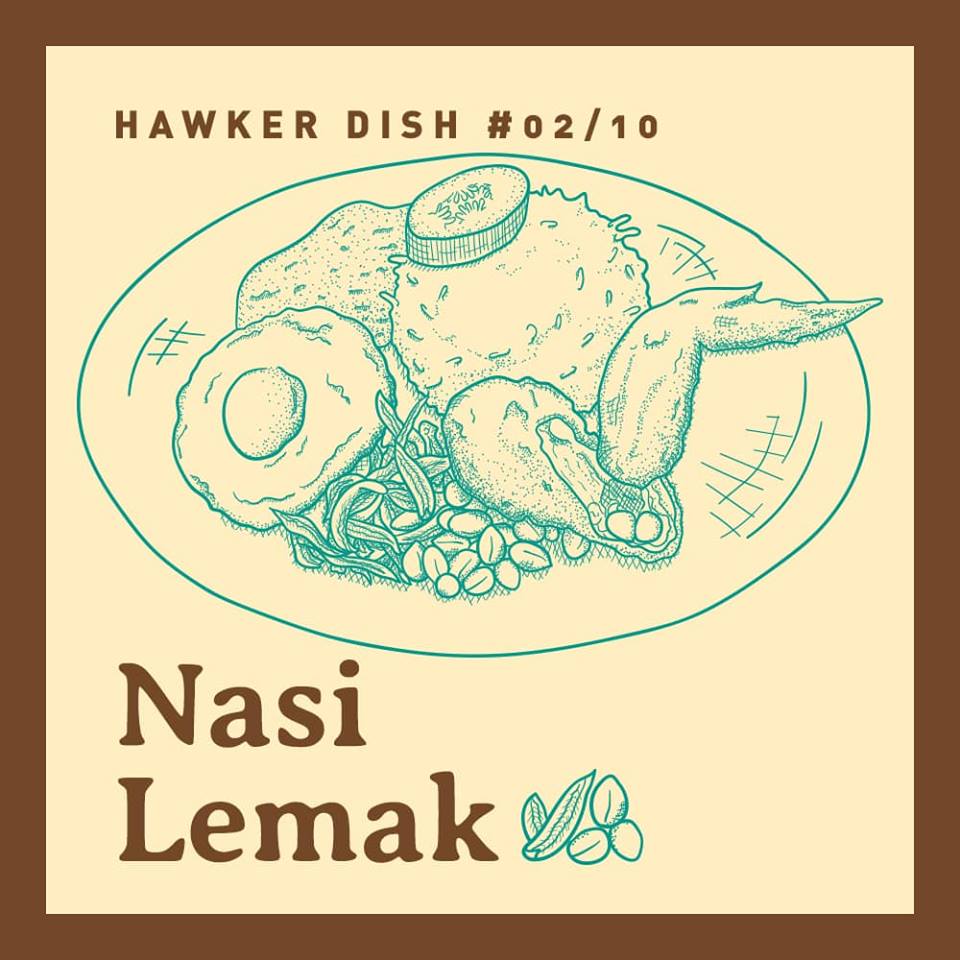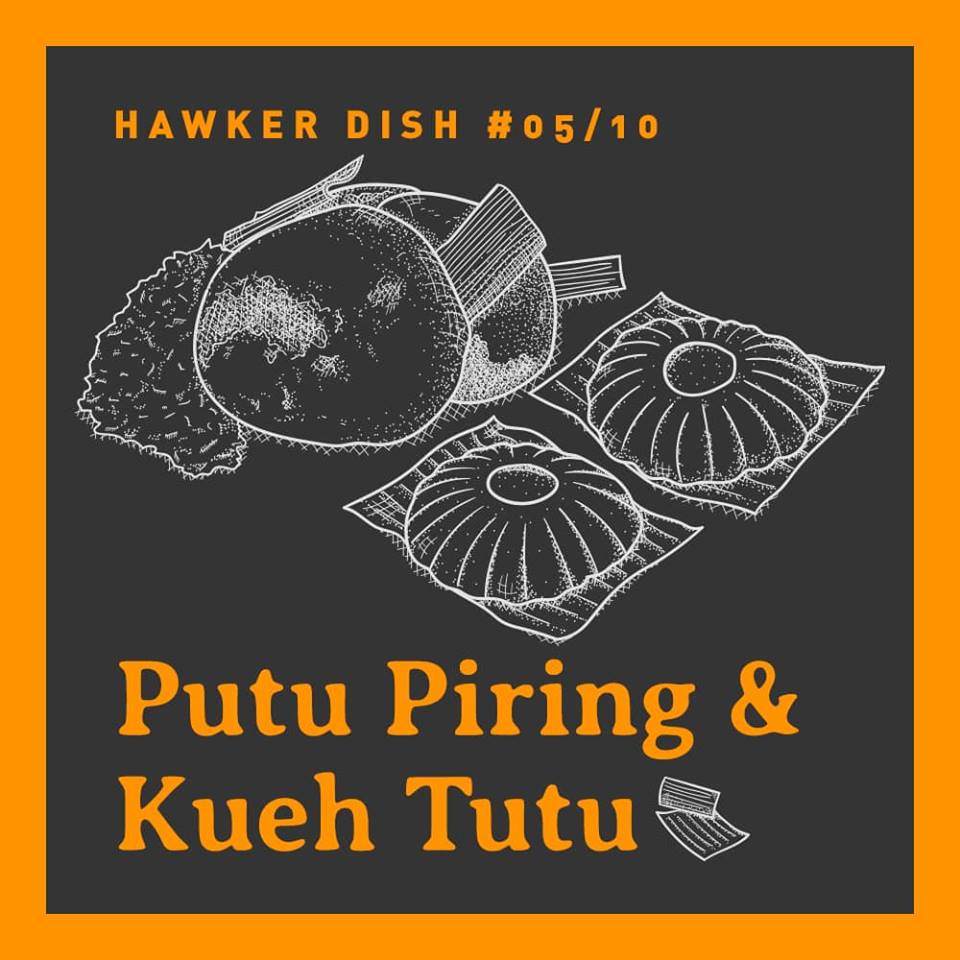When we think about alphabet soup, this isn’t what comes to mind.
“The story behind this font is that the designer created it by averaging all the serif fonts in his computer! Being a blend of different fonts, I thought it was appropriate for this project, which is about a blend of different cultures and cuisines.”
The anecdote is courtesy of Teo Yu Siang, a Singaporean UX designer, and the heart behind Hawker Heritage. It’s a project that advocates for diversity and the LGBTQ community by delving into the manifold origins of 10 iconic dishes.
The website sports a polished, minimalist layout, contrasting tri-coloured spreads, and vintage, hand-drawn illustrations. These elements evoke nostalgia for a time long past through a modern, forward-looking feel—as though it aspires towards a future where queer people like Yu Siang will be accepted in Singapore.
There’s a lot more work to be done beyond the yearly extravaganza of Pink Dot. How are Singaporeans continuing the fight for gay rights?
So, we had a chat with Yu Siang about the LGBTQ movement in Singapore, culinary tales, and serif fonts.

Yu Siang: Because it’s a tangible success story of diversity. With various events happening all at once—‘hawker culture’ being pushed for the UNESCO Cultural Heritage list, Pride Month, and PM Lee’s comments—I wanted to do something about diversity. I wanted to say, if you love hawker food, don’t you know it’s a celebration of diversity? Wouldn’t it be great if we celebrated other forms of diversity as well? Look at the value we can get from that!
R: Would you say that hawker food reflects the diversity of people in Singapore? Especially since we’re a young, migrant nation.
YS: For sure! After the British colonised Singapore, there was a boom of people from all over the world who came to Singapore. The Malay people are indigenous to here, but in my research, I’ve noticed a lot of migration from coastal areas. There are many regions from various countries: we have the provinces of Hainan and Guangdong from China, and Tamil Nadu and Kerala from India. You can trace the dishes back to these regions, and how the people from each region brought their cuisine to Singapore.
But the dishes didn’t stagnate; they evolved to fit the tastes of the people. You can see this confluence in a bowl of laksa, with Chinese noodles and Malay spices, forming this iconic regional dish.
But there’s also a divergence: for example, the three types of rojak (mama, buah, bandung), and different variations of nasi lemak. Nowadays we see that fried chicken is a staple, although originally nasi lemak tended to have ingredients like ikan bilis and coconut. The Chinese adapted the dish to have non-halal additions like luncheon meat. You can see how various communities have made these dishes their own, and the interplay between people and cuisine.

YS: Speaking in my capacity as an observing citizen, I feel like there certain forms of more acceptable diversity in Singapore. There’s racial diversity, which is widely celebrated, with Racial Harmony Day and all.
Other types of diversity like gender or sexuality, are more controversial. And I feel it’s because of the policies and narratives of the government has established. We talk about racial riots and the importance of respecting other races and religions, and that’s great. They’ve played a vital role in nation building. But we’ve inherited 377A from colonial times and done nothing about it, because it’s not part of our nation’s narrative.
With the state policing the kinds of conversations we have to maintain order, and the illegitimacy of certain types of diversity censoring their expression, how can we move forward? Without being represented, without being able to talk about it, some forms of diversity—namely, LGBTQ diversity—are just not widely accepted.
R: And how do you think the LGBTQ community handles diversity within itself?
YS: Diversity is a work in progress. It’s not just inherent to our community but also our country. Of course, some people tend to be more judgy, especially on dating apps where you can see discriminatory preferences. On top of that, I think it’s good to note that there’s different shades of diversity, even within the LGBTQ community.
As a Chinese gay man, I enjoy racial majority and male privileges that others in my community might not. Like, there are Malay and/or Muslim folks who are queer, and they face a “triple whammy” of challenges—they belong to a sexual and racial minority and also face their own set of challenges regarding their religious practice. There’s definitely work to be done to promote more diversity and we’re aware of that.
But I want to contest the idea that the LGBTQ community is a monolith. Different people have different beliefs regarding the direction of our movement—and that’s okay! In an ideal world, we should be able to pursue our own ways of advocacy. Treating Pink Dot as the be all and end all of the LGBTQ community in Singapore shows how accustomed we are to having a single narrative, and we should break out of that.
R: When we talk about hawker culture, we can see that there’s this organic commingling of different cultures and cuisines that brought about hawker food as we know it today. Do you think this organic, ground-up intermixing should be how we push for diversity?
YS: I don’t think so. I’m a believer in affirmative action. If current forms of diversity are state-sanctioned, policies are our fastest way forward. It might take a very long time to organically change the status quo if there’s already controversy. This is where the government has to say “this is the right thing, you’re either on board or not, we’re going to do it.” They’ve already done this before for economic policies, racial policies. Just not for such social issues.

YS: I mean, we’re all storytellers right? Or story listeners at least. The LGBTQ community is marginalised, and such communities often bandwagon on the mainstream so they can be heard. Like, some Christian fundamentalists might say that the LGBTQ community has hijacked the rainbow. And that’s what I’m doing here. Taking this uncontroversial, mainstream symbol of ‘hawker food’ and spinning it into a queer narrative. That’s how we get people talking. These stories belong to us too.
The problem is when people focus on the surface narrative and not the message. Many miss the point of this project, thinking that it’s about celebrating hawker food. It’s really about diversity and LGBTQ issues, and hawker food is the vehicle to carry that message and open the conversation. I’m learning how people can willfully misinterpret your message because it might be too controversial.
R: Among the various rice dishes in your project, which is your favourite?
YS: Putu piring and kueh tutu! Two dishes seem like cheating, but they’ve got a great story. I’ve always thought that they were the same dish, being rice snacks. But in my research, putu piring comes from India, while kueh tutu originates from Fujian, China. It’s very interesting how two similar looking and tasting dishes come from two totally different places.
As for which of the two I prefer eating? It depends on my mood, given the different types of fillings!






